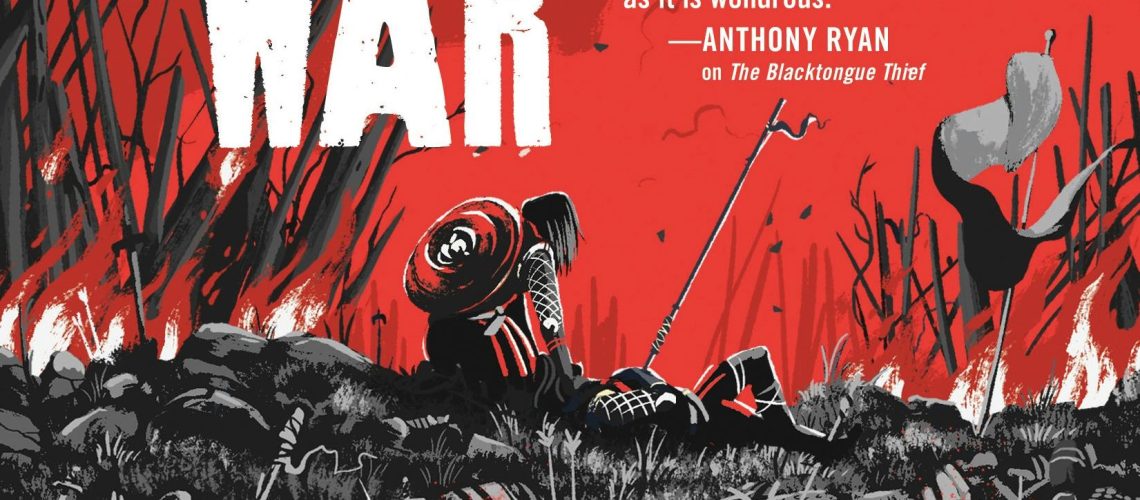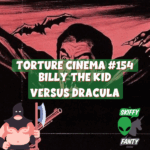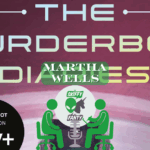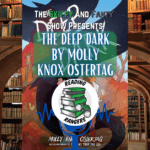In 2021 Tor Books published The Blacktongue Thief, the debut fantasy from Christopher Buehlman, previously known for his horror novels. Buehlman wrote that novel from the point of view of Kinch, a man in debt for his training by the Taker’s Guild. Kinch’s desperation led him to cross path with a battle-scarred knight of the Goblin Wars who was a-questing for a missing queen. The two became unlikely and tenuous allies, while also being joined by a witch’s apprentice named Norrigal.
Unsurprisingly given Buehlman’s background, The Blacktongue Thief leaned grimdark with moments pulled from horror. Yet, the distinctive wit of Kinch’s voice – and its sardonic humor – balance the novel with a lightness that makes a compelling read without overwhelming the reader in oppression, despair, and gore. Buehlman’s world-building captivates, suffusing the characters and story with an atmosphere that both fleshes out details of the setting and hints at even greater depths of interest beneath. Additionally the juxtaposition of personalities between the three main characters, and each of their personal developments, makes the novel shine like something fresh and noteworthy despite what is at its core a basic plot and set of character “types” for epic fantasy.
With its beguiling voice, strong characterization, and excellent pacing, The Blacktongue Thief is one of the most enjoyable recent fantasies I’ve read, and I was more than ready to get Buehlman’s follow-up for this “Blacktongue” series in The Daughters’ War. I didn’t even bother to look at what this next novel exactly was; I just dove in.
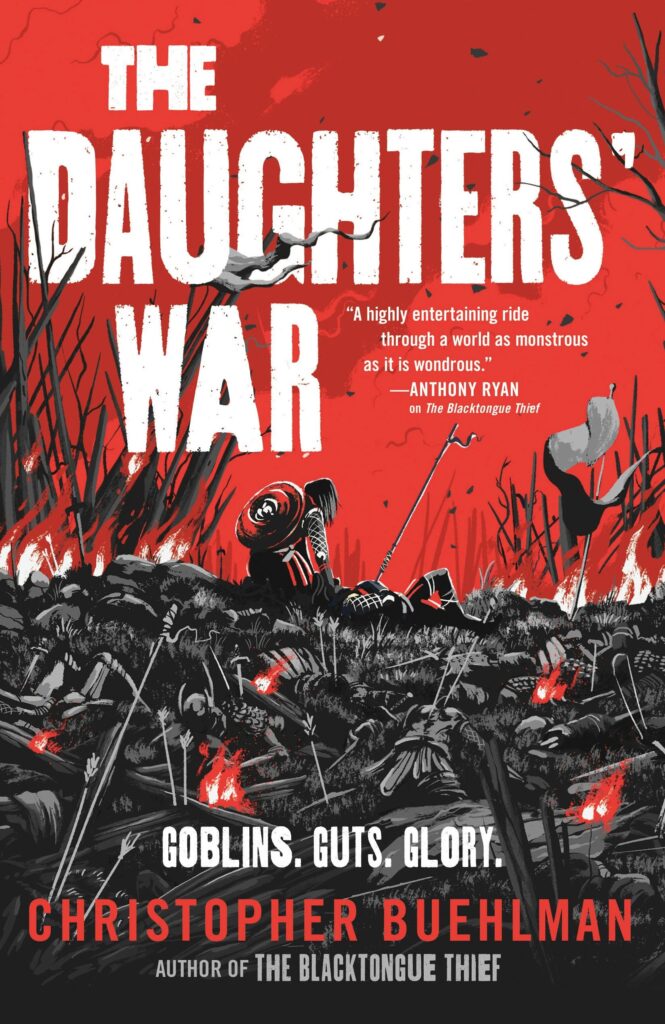
If you don’t already know, The Daughters’ War is a follow-up that is not a sequel, but a prequel. Book 0 in the Blacktongue series, Buehlman’s new novel tells the backstory of Galva, as if she were relating it to Kinch. The Galva at the start of The Daughters’ War is far from the war-torn knight we (and Kinch) later meet in The Blacktongue Thief. Similarly, so too is the new novel’s voice, coming from the disciplined personality and blunt tongue of Galva rather than the more chaotic personality and wry, sarcastic tongue of Kinch.
At the start of The Daughters’ War, Galva has joined a new experimental unit of the combined armies fighting in the brutal Goblin Wars: the Raven Knights. This unit consists entirely of women who are forging bonds with magically bred corvids of massive stature and deadliness. Galva’s interest in fulfilling her duty as a member of the unit faces complications from her family’s position of stature and their disapproval of her choice to join the Raven Knights. Her father is the Ispanthian Duke of Braga, and her three brothers are there on the shifting fronts battling the goblin hordes in different capacities.
Migaéd is the eldest brother, a weak and fearful man who uses his power and influence to avoid responsibility and death to focus on gambling and drink and interfering with Galva’s relationship with the human members of her unit and her two beloved corvids. Middle brother Pol sits on the war council and is more respectful of Galva, but the youngest brother Amiel lies closest to Galva’s heart. Amiel serves as an apprentice/assistant to the powerful and mysterious wizard Fulvir, whose art and talent has created the War Corvids to fight against the brutal goblins.
And how brutal those goblins are. In many regards The Daughters’ War ups the grimdark ante in the series, with scenes of actual warfare and its atrocities that go beyond the action in The Blacktongue Thief. But the shift also arises from the lack of Kinch’s voice and humor. Yet, The Daughters’ War still never reaches a point of seeming to be too much. Buehlman breaks up the personality of Galva’s voice with letters from Amiel that she is presumably showing to Kinch. The reader thereby gets additional points of view on the overall war experience, events outside Galva’s immediate experience, and his kindhearted personality. The horrors of the Goblin War also are tempered by Galva’s comradery with her corvids and her fellow Raven Knights, particularly her best friend Inocenta, a follower of Dal-Gaata, the goddess of death. (Readers of The Blacktongue Thief will know of the significance for that.)
Galva’s experiences take her from relative inexperience and innocence through a gamut of threats from goblin-folk and human-folk to produce the character readers first met in The Blacktongue Thief. This creates the question of how future readers might approach the Blacktongue series. The Daughters’ War works well as a prequel to read following The Blacktongue Thief, but I also think that parts of the latter-set novel might be better appreciated upon reading this prequel. Those who’ve read the books in publication order might find themselves wanting to reread The Blacktongue Thief after closing the covers of this novel. However, for those who haven’t yet read anything of the series, it wouldn’t be a bad idea to simply start with The Daughters’ War and then proceed on to the novel first written.
My understanding is that Buehlman has written the prequel because his expansion and continuation of The Blacktongue Thief required him to more fully flesh out Galva’s backstory, creating a story prior to where he first started the journey with Kinch. While I’ve often seen this done with disappointing and seemingly unnecessary results, it 100% works here for the Blacktongue series, particularly with the relatively enigmatic and more guarded personality of Galva by the point of her meeting Kinch.
Despite the differences in point-of-view and voice between the two novels, I loved The Daughters’ War for all the same general reasons as The Blacktongue Thief, a testament to Buehlman’s craft. What stuck out to me in this new novel, though, were the Goblins. I can’t actually remember if they appear much – or at all – in the original novel, but I appreciated getting to see them here, even with all their horrors. Despite their nature as monstrous enemies, Buehlman puts in hints of their person-hood and culture that indicate these goblins might be much more, they are just too alien for the humans to figure out, and vice versa. Fantasy of past eras heavily employed “exotic” human “others” as monstrous antagonists, and it’s of course less problematic to use made-up creatures for that trope. Yet, Buehlman makes clear these goblins, while not human in name, are not necessarily that different at their core. This raises all sorts of themes that could be explored in terms of intelligence, consciousness, etc. between humans and other animals in ways that SF novels have at times gotten into between humans and aliens, but could be equally applied to epic fantasy.
For those interested in The Daughters’ War, there is an excerpt available on the Tor/Forge blog that can be read here.

